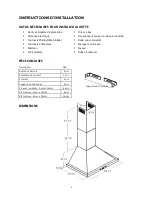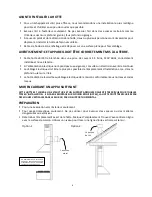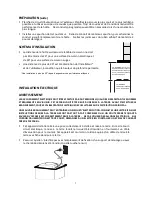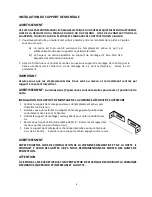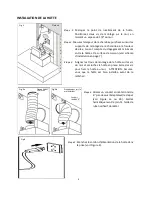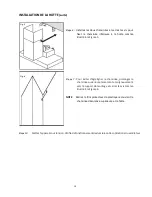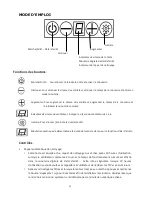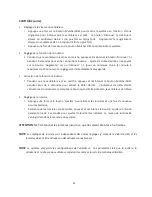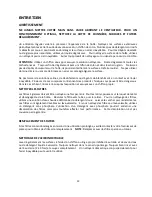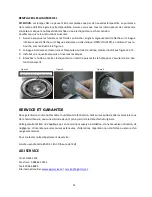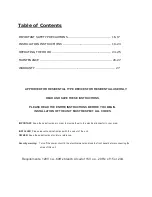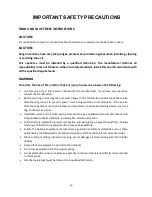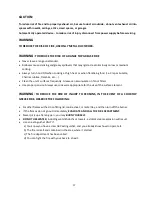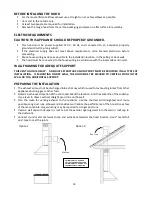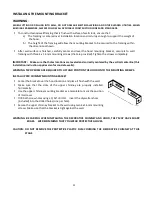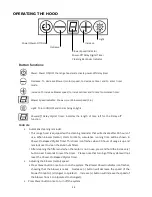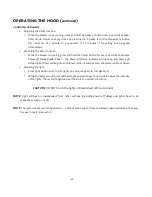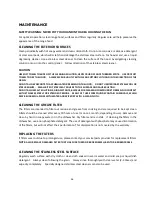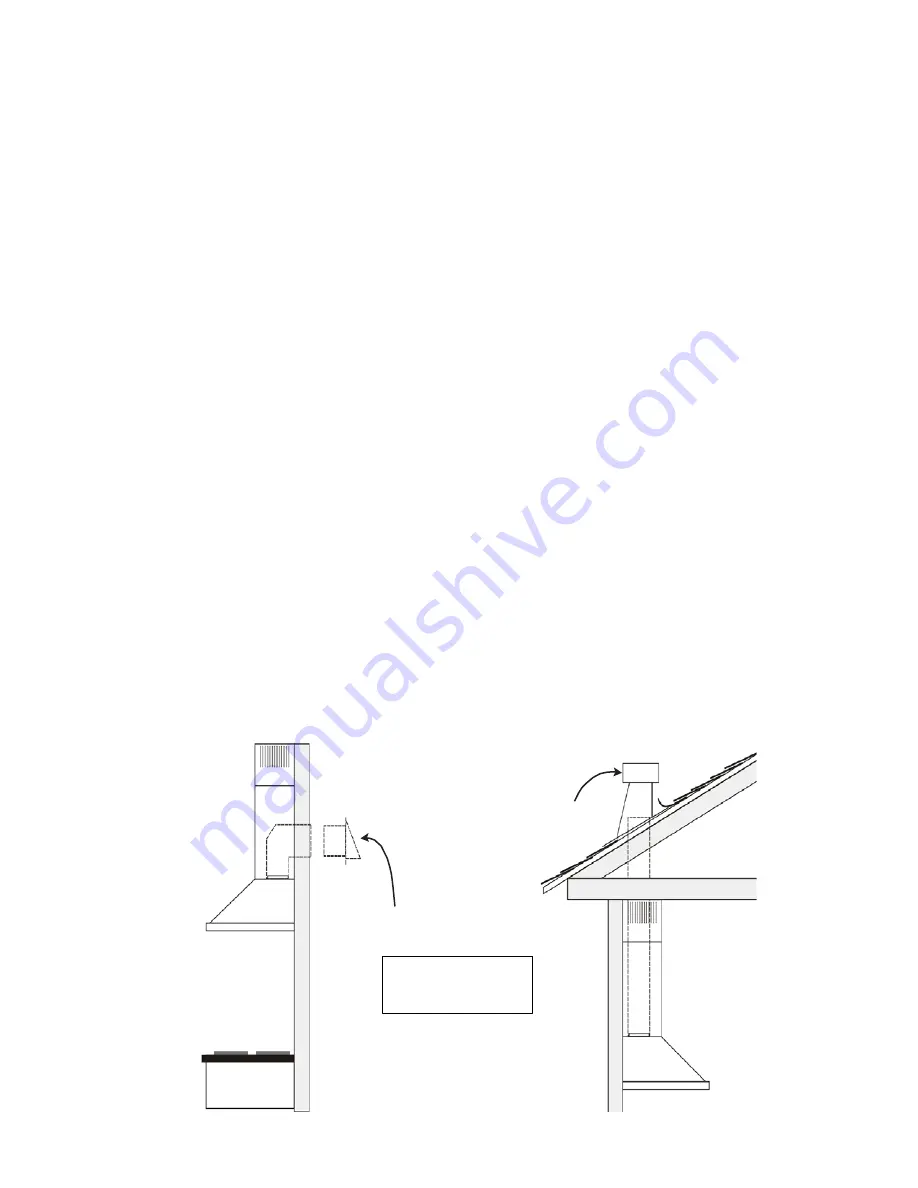
BEFORE INSTALLING THE HOOD
For the most efficient airflow exhaust use a straight run or as few elbows as possible.
Vent unit to the outside only.
At least two people are required for installation.
Remove the range hood from the carton packaging and place on a flat surface for assembly.
ELECTRIC REQUIREMENTS
CAUTION: THIS APPLIANCE SHOULD BE PROPERLY GROUNDED.
This hood must be power supplied 120 V, 60 Hz, and connected to an individual, properly
grounded circuit (3-prong outlet).
If the electrical supply does not meet above requirements, call a licensed electrician before
proceeding.
Route house wiring as close as possible
to the installation location, in the ceiling or back wall.
The hood must be connected to the house wiring in accordance with the local codes and norms.
WALL FRAMING FOR ADEQUATE SUPPORT
THIS VENT HOOD IS HEAVY. ADEQUATE STRUCTURE AND SUPPORT MUST BE PROVIDED IN ALL TYPES OF
INSTALLATION. IF MOUNTING ON DRY WALL, THE HOOD MUST BE SECURED TO VERTICAL STUDS IN THE
WALL OR TO A HORIZONTAL SUPPORT.
PREPARING THE INSTALLATION
The exhaust air must not be discharged into a chimney which is used for exhausting fumes from other
appliances burning gas or other fuels.
Determine the exact location of the vent hood. Mark the location. Find the centerline of the cooktop.
Use a level to draw a vertical straight pencil line on the wall.
Plan the route for venting exhaust to the outdoors. Use the shortest and straightest duct route
possible. Long duct runs, elbows and transitions will reduce the performance of the hood. Use as few
of them as possible. Larger ducting may be required for longer duct runs.
Install a wall cap with damper or roof cap at the exterior opening/wall. Join the wall or roof cap to
the ductwork.
Connect round metal ductwork to cap and work back towards the hood location. Use 2" metal foil
duct tape to seal the joints.
Option 1:
Option 2:
A MINIMUM OF 26” ABOVE AN
ELECTRIC COOKING SURFACE AND
A MINIMUM OF 30" ABOVE A GAS
COOKING SURFACE IS REQUIRED
19
Wall cap
Roof cap

